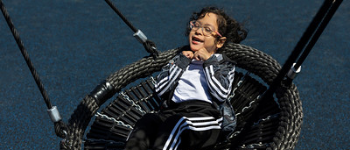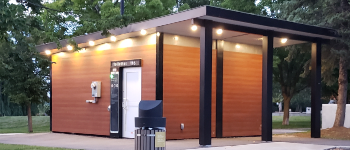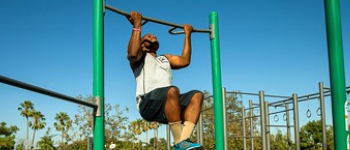Exercise and outdoor activities have always been essential for a healthy lifestyle. With the rise of outdoor fitness parks, communities can blend the two, offering residents a unique way to stay fit while enjoying the great outdoors. But how do you ensure that your outdoor fitness park matches the needs of your community?
Let's dig in.
Typical Users of Outdoor Fitness Parks
From enthusiastic young people seeking a space to hone their physical abilities to older adults aiming for gentle exercises to maintain vitality, these parks are a haven. They also cater to parents juggling childcare with personal fitness, emergency service workers seeking realistic training, athletes in training, and even those on the path of rehabilitation.
Here's a deeper look at who can benefit from and use an outdoor fitness park:
- Young Adults: Whether it's calisthenics, yoga, or high-intensity interval training, young adults can find the space and equipment they need.
- Outdoor Fitness Enthusiasts: Many individuals prefer the outdoors over traditional gyms. The combination of fresh air, natural light, and the opportunity to connect with nature makes outdoor workouts appealing.
- Elderly Residents: For those aiming to maintain flexibility and strength, gentle exercises using park equipment can be beneficial.
- Families: Modern fitness parks often incorporate equipment suitable for all ages, allowing parents and children to exercise side by side. This promotes family bonding and introduces children to the importance of physical activity from a young age. Additionally, an outdoor fitness park or playground that offers outdoor fitness equipment allows parents to exercise while monitoring their children nearby.
- Emergency Service Workers: Firefighters, police officers, and emergency medical technicians can use the equipment or outdoor space for realistic training scenarios, preparing them for the physical demands of their jobs.
- Athletes: These parks offer tools for people training for a marathon, a local sports league, or just looking to improve their fitness levels.
- Rehabilitation and Physical Therapy Patients: For those recovering from injuries or surgeries, outdoor fitness parks can provide a serene environment to regain strength and mobility under the guidance of their therapists.
- Community Groups: From yoga classes to boot camps, community groups can utilize these spaces for group workouts, fostering community spirit and promoting health.
Read More: How to Build a Well-Rounded Workout with THRIVE Fitness
Community Benefits of Outdoor Fitness Parks
The allure of outdoor fitness parks goes beyond just the physical. These outdoor spaces offer many other benefits.
Here's a closer look:
- Accessibility for All: One of the most significant advantages of outdoor fitness parks is that they make exercise free and accessible to everyone. Financial and location-based barriers are eliminated, ensuring everyone has an equal opportunity to get in shape.
- Mental Health Boost: Regular outdoor exercise strengthens the body and promotes better mental health. Combining physical activity and nature can reduce stress, depression, and anxiety.
- Strengthening Community Bonds: Outdoor fitness areas provide a communal space where residents can interact, fostering a sense of community. Engaging in group workouts or simply getting to know one another while using the equipment can combat feelings of loneliness and isolation.
- Promotion of Healthy Habits: Providing residents with easy access to fitness equipment encourages regular exercise, leading to healthier lifestyles and reduced illness rates.
- Attracting New Residents: A well-equipped fitness park can make a community more appealing to potential residents. It sends a clear message that the community values health and wellness.
- Promoting Multi-Generational Play: Modern outdoor fitness equipment can sometimes resemble children's play equipment. This design encourages parents and children to exercise together, promoting family bonding and health for all ages.
Understanding Your Community and Its Needs
When planning an outdoor fitness park, it's crucial to understand your community's specific needs and preferences. Here are some steps to consider:
- Survey the Community: Before investing in equipment, gather feedback from residents. Understand their fitness preferences, the type of equipment they'd like to see, and any other amenities they value.
- Choose Quality Equipment: Opt for durable, weatherproof equipment that caters to various fitness levels. Ensure the equipment promotes cardio, strength, balance, and flexibility training.
- Champion Inclusivity: Design with all in mind, ensuring accessibility for individuals of all abilities.
- Incorporate Unique Features: Think beyond traditional gym equipment. Add features like artificial rock climbing walls, obstacle courses, or an interactive DJ booth to make the park more engaging.
- Provide Amenities: Ensure the park has shade structures, seating, trash cans, and bike racks. These additions enhance user experience and encourage longer visits.
- Think Safety First: Always prioritize safety. Ensure the equipment has clear instructions and is regularly maintained. Consider adding safety surfaces like those found in playgrounds to minimize the risk of injuries.
Find Your Perfect Outdoor Fitness Equipment
Outdoor fitness parks are more than just a collection of exercise equipment. They're community hubs that promote health, well-being, and social interaction. By understanding your community's needs and investing in quality equipment and amenities, you can create a space that residents will love and use regularly.
Need help determining what outdoor fitness equipment is right for your park or community? Let us help you decide. With our expertise and wide range of equipment options, you're sure to create a fitness park that perfectly matches your community's needs. Reach out today.







